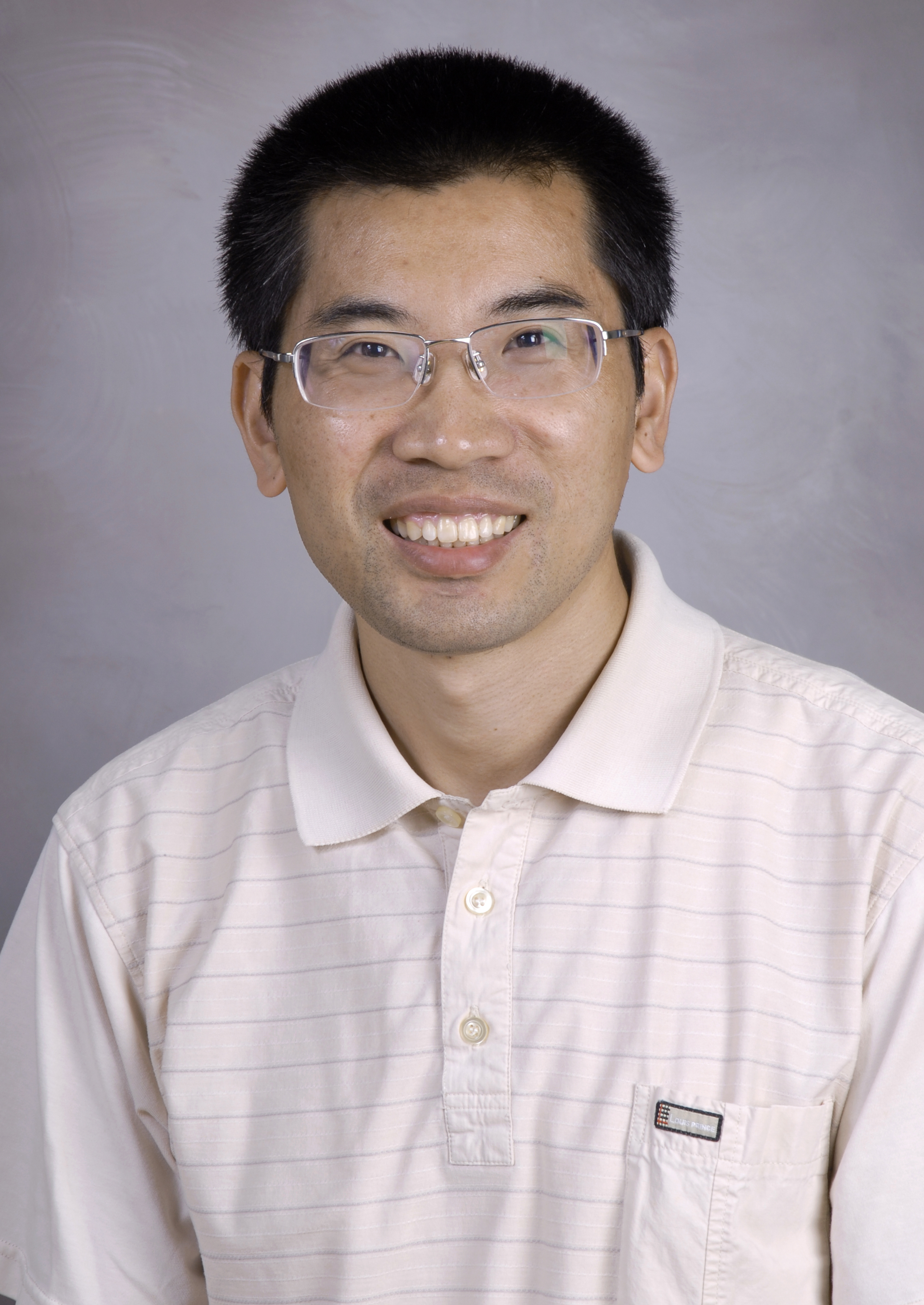Wu Lab

Chenggang Wu, PhD
The Wu lab is focused on understanding the mechanism of gum disease-associated dental biofilm formation and dispersal.
Fusobacterium nucleatum是一种口服pathobiont不仅与每iodontitis, but also with extra-oral disease such as preterm birth and colorectal cancer. Our current study is focused on understanding the regulations that controlF. nucleatum介导coaggregation。Coaggregation是形式ation of aggregates caused by cell-to-cell recognition of genetically distinct bacteria via the interactions between adhesins and their cognate complementary receptors; it is an important driving force for multispecies biofilm formation in nature.F. nucleatumis a prominent colonizer in dental plaque and has an outstanding coaggregation ability.F. nucleatumexhibits coaggregation with nearly all tested oral bacteria. Because of this,F. nucleatumhas been proposed as a bridge microorganism in dental plaque by virtue of its coaggregation with early and late colonizers. In the past decades, intensive work has been done to find which bacteria can aggregate withF. nucleatumand which adhesins inF. nucleatumare responsible for their coaggregation. Studies of coaggregation have so far yielded four fusobacterial adhesins: FomA, Fap2, CmpA and RadD. Of these, FomA and Fap2 bindPorphyromonas gingivalis, CmpA binds a specific Streptococcus strain, and RadD, a versatile adhesin, mediates fusobacterial aggregation with many early and late colonizers, includingAggregatibacter actinomycetemcomitans. Vital for plaque development, this RadD-mediated coaggregation process is an excellent experimental model for studying various cell-cell interactions within dental plaque. Theoretically, expression of adhesins inF. nucleatumshould be tightly regulated since increasing surface adhesins promotes oral biofilm formation; however, reducing their levels results in bacterial dispersal, which changes the diversity and composition of dynamic dental plaque and probably shifts a health-associated plaque to a pathogenic one. Little is known about the regulatory mechanisms underlying the multispecies interactions involvingF. nucleatum.We use a multidisciplinary approach including genetic, biochemical methods, mass spectrometry, fluorescence confocal microscopy, and electron microscopy to pursue the following questions related to RadD-mediated coaggregation.
- How is the amount of RadD regulated?
We screened a fusobacterial transposon mutant library and identified a two-component system namedcoaggregationregulator CarS/CarR that regulatesradDexpression. We are interested in how CarSR influencesradDlevel and then modulates multispecies biofilm formation. We are also interested in the question of what signal(s) are sensed by CarRS. RadD is a type V autotransporter. Fusobacterial surfaces display several type V autotransporters, which are important virulence factors. We want to use RadD as a model to study the biogenesis of the type V autotransporter in Gram-negative bacteria.
- How is RadD activity regulated?
Coaggregation not only associates tightly with the level of RadD, but also with its activity. We discovered that free lysine in the environment modulates fusobacterial coaggregation “in situ” as lysine binds to RadD, thereby blocking RadD from binding to its partners, and hence, allowing co-aggregation. We also found a nine-gene-operon that encodes a lysine-degrading pathway (LDP) that controls environmental lysine level. A changing level of lysine is present in gingival crevicular fluid (GCF); GCF provides nutrition for the microbial members within the subgingival plaque. Ultimately, we are interested in four things: 1) what the source of lysine in GCF is, 2) how fusobacterial cells sense lysine and trigger LDP expression, 3) what role lysine and LDP have in fusobacterium-mediated polymicrobial biofilm formation, and 4) whether host proteins also influence fusobacterium-mediated coaggregation and its pathogenesis.
- How does coaggregation influence gene regulation in the partner organisms?
Cell-cell physical interactions alter metabolic and functional pathways in the partner organisms. These interactions trigger coaggregation-specific genes’ expression and may be essential for fusobacterial adaptation and survival in polymicrobial dental biofilm. These genes may be useful as biomarkers for dental plaque-associated oral disease. We are interested in what genes are coaggregation-dependent and how those possible gene regulations occur inF. nucleatum.